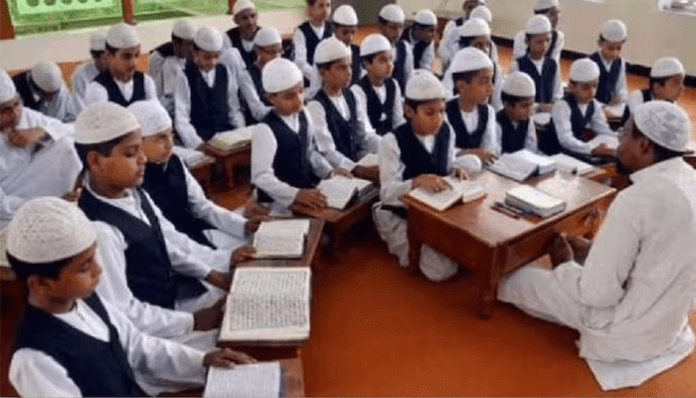In the aftermath of the Red Fort blast and the busting of a Jaish-e-Mohammad-linked terror module of doctors, the Uttar Pradesh Anti Terror Squad (ATS) has ramped up surveillance and has sought the details of Madrasa students and their teaching staff from the eight districts under the Prayagraj zone.
In a letter dated November 15, 2025, the UP ATS directed the District Minority Welfare Officers (DWOs) of the districts of Prayagraj, Pratapgarh, Kaushambi, Fatehpur, Banda, Hamirpur, Chitrakoot, and Mahoba to provide the complete details of all madrasas operating across the districts. The letter the ATS has sought details like the names of students, their fathers’ names, addresses and mobile numbers.

Speaking to the media about the letter, Senior ATS officials in Lucknow reportedly said that the decision intends to “prevent any possibility of madrasas being misused by anti-social elements”. The order has only been issued with respect to the eight specified districts for the time being.
Prayagraj District Minority Welfare Officer Krishna Murari said on Wednesday (19th November), the requisite details from the madrasas across the district have been submitted to the ATS. The district reportedly has around 206 operational madrasas. A ground-level verification of the submitted details has been initiated by the ATS. Explaining the rationale behind the ATS order, Uttar Pradesh Panchayati Raj and Minority Welfare Minister Om Prakash Rajbhar said that in the past, several madrasas in the state have been found engaging in illegal activities, and therefore, the scrutiny is required.
Lucknow, Uttar Pradesh: On the ATS inquiry in madrasas, Minister Om Prakash Rajbhar says, "From time to time, various issues emerge from madrasas. For example, in Prayagraj, there were cases of currency printing, and similarly in Kushinagar. In Bahraich, arrangements were found… pic.twitter.com/0YiSLpghTJ
— IANS (@ians_india) November 19, 2025
Explaining the rationale behind the ATS order, Uttar Pradesh Panchayati Raj and Minority Welfare Minister Om Prakash Rajbhar said that in the past, several madrasas in the state have been found engaging in illegal activities, and therefore, the scrutiny is required. “From time to time, various issues emerge from madrasas. For example, in Prayagraj, there were cases of currency printing, and similarly in Kushinagar. In Bahraich, arrangements were found for foreigners and outsiders to stay in madrasas,” the Minister said.
Opposition terms ATS’ vigilance as fear-mongering
The vigilance of the UP ATS has irked the opposition parties, which termed the proactive action of the agency as an attempt to cast suspicion on all Muslims. Congress National Secretary Shahnawaz Alam described the action of the ATS as fear-mongering in the garb of security checks. “An attempt is being made to politicise the security apparatus, and see every Muslim through the prism of suspicion. Various inquiries on madrassas in U.P. have been conducted, and all the necessary records are with the government and agencies. From time to time, the madrassa system is put under a lens, but ATS seeking complete details is a bit alarming, as it is a dedicated agency for counter terrorism. Whatever the agency’s suspicion, the hard truth is that ATS has failed to convict the accused in most cases related to terrorism in Indian courts. We believe national security is paramount, but the government should issue a white paper on the logical conclusion of cases taken up by the ATS reached. We feel fear-mongering in the guise of security checks is avoidable,” said Alam.
Samajwadi Party Spokesperson, Ameeque Jamei, also echoed similar sentiments and said, “The whole country is united against terrorism. But this unnecessary move to deploy the most elite force, the ATS, to investigate madrassas, their students and teaching staff will create chaos; no agency should become a political tool”.
Notably, before the Red Fort blast, the investigation agencies uncovered an interstate Islamic terror module linked with the Pakistan-based terrorist organisation Jaish-e-Mohammad. The agencies found that the terror module, spread across Jammu & Kashmir, Haryana, Delhi and Uttar Pradesh, was also behind the Red Fort blast and had foreign linkages.

